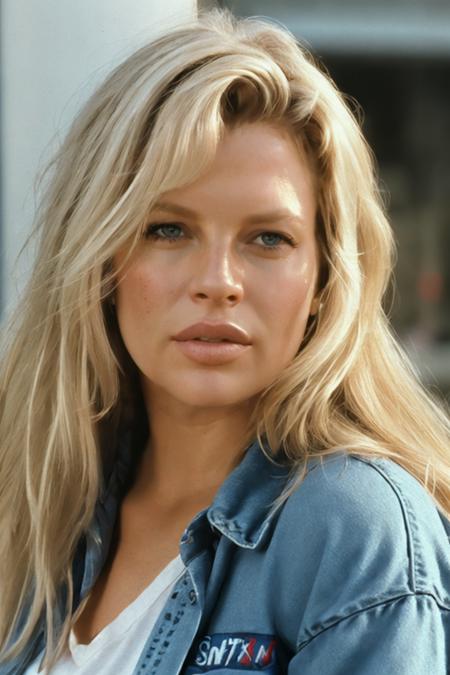In the glittering final stretch of the 1980s, when Hollywood was at its most opulent and over-the-top, one name stood at the crossroads of style, sensuality, and star power: Kim Basinger.
By 1988, Basinger wasn’t just a movie star — she was the embodiment of the decade’s aesthetic. Voluminous blonde hair, smoky eyes, shoulder pads and satin, a whispery voice wrapped in velvet confidence. She didn’t just enter scenes — she took command of them. Whether she was playing a femme fatale, a love interest, or a woman on the edge, Kim always brought a mix of softness and steel that made her unforgettable.
And while many remember her for Batman — where she starred as photojournalist Vicki Vale opposite Michael Keaton’s brooding Dark Knight — Basinger’s magnetism had been building long before Gotham.
This was the year she became unstoppable.

The Beauty of Mystery
What made Kim Basinger stand out wasn’t just her beauty — though that certainly didn’t hurt. With classic bone structure, a timeless screen presence, and the kind of hair that seemed to belong in a shampoo commercial and an action movie simultaneously, she was instantly captivating. But behind the glamour was something more elusive: mystery.
There was always something unreadable behind Basinger’s eyes. Whether she was walking down a staircase or facing down a villain, she gave the sense that she was holding something back — not out of calculation, but out of depth. She wasn’t trying to seduce you. She just happened to.
It’s what made her a new kind of leading lady — less the screaming damsel, more the quiet enigma.

A Year of Big Roles and Bigger Impact
While Batman was released in 1989, much of the buzz surrounding Kim began the year prior. In 1988, she was already riding high from a string of high-profile roles and intense public fascination. After breakout performances in films like 9½ Weeks (1986) and No Mercy (1986), audiences had come to associate her with a kind of cinematic danger: sexy, unpredictable, and emotionally charged.
Then came Batman — and everything changed.
When Basinger stepped into the role of Vicki Vale, she brought more than just a romantic interest. She gave the film a pulse. Amid the gothic shadows of Tim Burton’s vision and the chaos of Gotham, Basinger’s Vicki was luminous — a character equal parts elegance and vulnerability, navigating a world of darkness with resilience. Her chemistry with Michael Keaton was electric, but her screen presence didn’t rely on any man. Vicki Vale wasn’t just following the story — she was chasing it.

Style, Strength, and the ’80s Woman
Part of what made Basinger such an icon in 1988 was how perfectly she reflected the era’s contradictions. The 1980s were a time of power suits and excess, but also of emotional openness and reinvention. Kim walked that line masterfully.
Her characters were never one-dimensional. She could play emotionally raw (9½ Weeks), intelligent and driven (Batman), or hauntingly damaged (Blind Date, Nadine). And through it all, she dressed the part — becoming a fashion inspiration for an entire generation of women.
With her signature blowouts, tailored coats, and neutral palettes, she brought a softness to power dressing. Her look was confident but not cold. Sexy, but never desperate. She was what many women of the ’80s were aiming for: unapologetically feminine, but firmly in control.

More Than a Bombshell
Though she was often labeled a “bombshell,” Kim Basinger wasn’t content to stay in the box Hollywood tried to put her in. She chose roles that challenged her — even when they weren’t guaranteed hits. She turned down obvious blockbusters in favor of edgier, riskier projects. She wanted to be more than beautiful. She wanted to be taken seriously.
And eventually, she was.
A decade later, she’d win an Academy Award for L.A. Confidential (1997), proving what those who watched closely already knew: behind the beauty was a true actor.
But in 1988, she was in her imperial phase — the perfect blend of myth and humanity, playing women who were alluring, yes, but also flawed, haunted, and real.

The Lasting Legacy
So why does Kim Basinger in 1988 still resonate?
Because she didn’t just capture the look of the decade — she captured its emotional undercurrent. The uncertainty behind the ambition. The softness beneath the armor. In an era obsessed with appearances, she made audiences feel something deeper.
Her characters weren’t always invincible. But they were always unforgettable.
More than three decades later, the image of Basinger in her trench coat, camera slung over her shoulder, eyes wide in Gotham’s shadows, remains a pop culture imprint. It’s more than nostalgia — it’s respect. For the actress who lit up the screen without raising her voice. For the woman who proved that strength can come softly, and that glamor doesn’t have to shout to endure.